Virtual Reality
Varjo XR4 Headset Unveils High-Fidelity Mixed Reality Experiences
Published
5 months agoon
By
VRLOL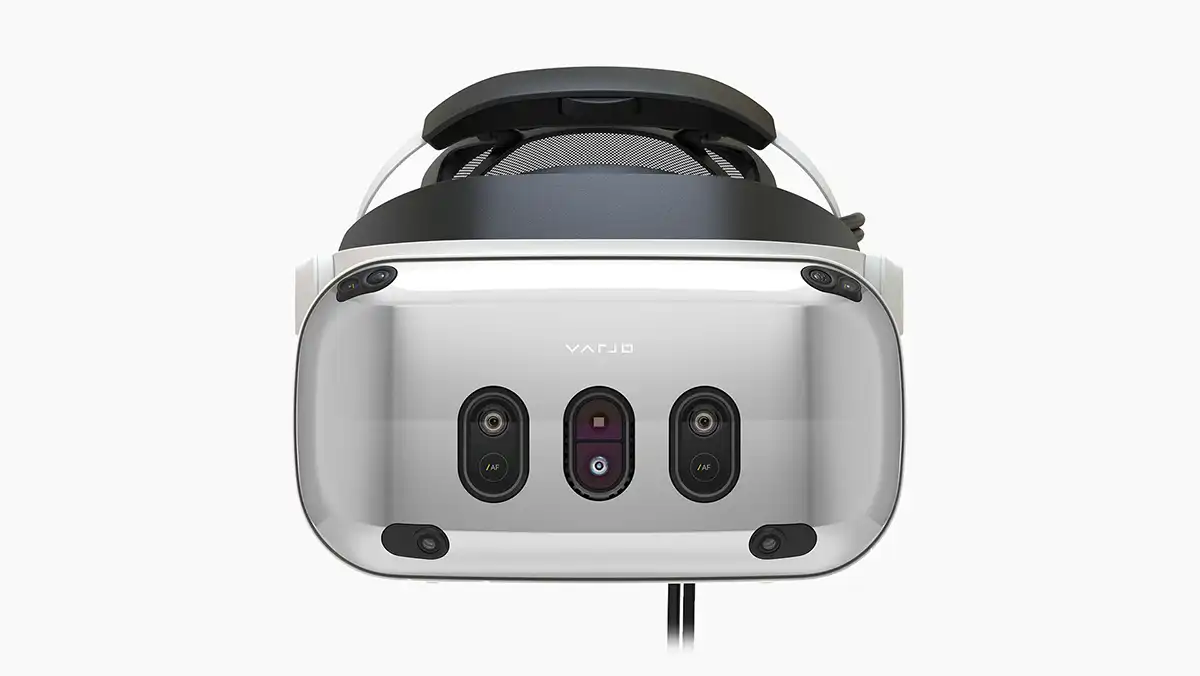
Varjo XR4 Headset Unveils High-Fidelity Mixed Reality Experiences
Varjo’s XR4 headsets enable high-fidelity virtual and mixed-reality experiences virtually indistinguishable from human sight. They work alongside various 3D platforms and tools, including the Nvidia Omniverse and 100+ third-party PC applications and engines.
The XR-4 Focal Edition and XR-4 Secure Edition offer unique passthrough capabilities. At the same time, the Focal Edition is optimized for stereoscopic teleoperation, and the Secure Edition adheres to government and enterprise-level security requirements.
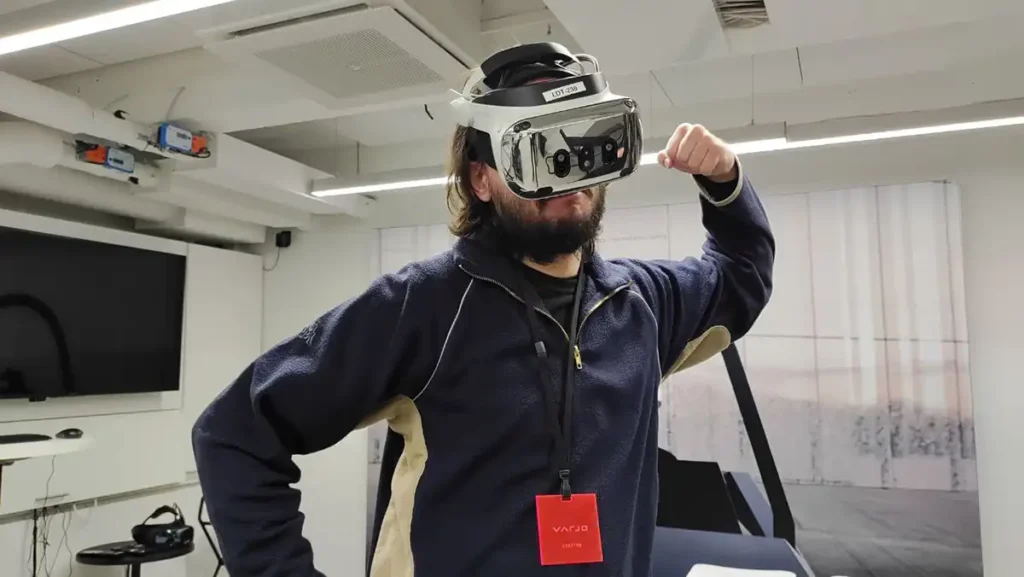
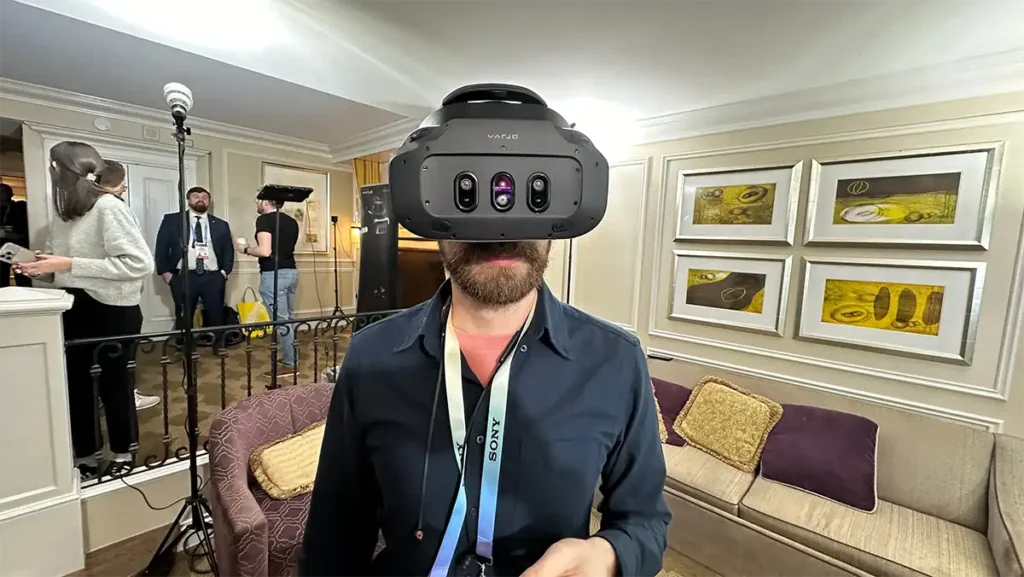
Superlative Immersion
The Finnish company Varjo makes enterprise VR/AR hardware to train astronauts and pilots, radically shorten automotive production timelines and render stunning 3D visualizations for architects and designers. These industrial customers require top visual fidelity and performance, and that’s what Varjo’s new 4th generation headsets deliver. In an online event this evening, Varjo stunned us with the details of its latest flagship head-mounted display, the XR4. It features dual 3840x4K displays with a massive 120 x 105-degree field of view and up to 51 PPD passthrough, powered by 10000:1 contrast local dimming using mini-LED. The XR-4 also has a larger lens to support its higher vertical field of view and dual 20-megapixel cameras for gaze-driven autofocus and advanced sensor fusion.
As with previous Varjo headsets, the XR-4 uses foveated capture streams and advanced LiDAR depth sensing to “mimic the function of human vision” and offer virtual reality and augmented reality experiences practically indistinguishable from natural sight. In addition, the XR-4 has built-in ambient light reconstruction sensors to provide developers with real-time information about the lighting conditions in a room so they can precisely and automatically light virtual objects.
For these reasons, the Varjo XR4 is a heavy piece of equipment – at nearly two pounds, it’s more than double the weight of Apple’s upcoming iPhone-focused headset and about three times more severe than the consumer-oriented Quest 3. Unlike most consumer headsets that work as standalone devices, the Varjo XR4 works with a workstation to enable compute-intensive applications, so you need an appropriately powerful PC to run it. It also requires using dedicated tracked controllers, made by Razer, to function – a significant drawback for some users, especially when the device must be worn for long periods.
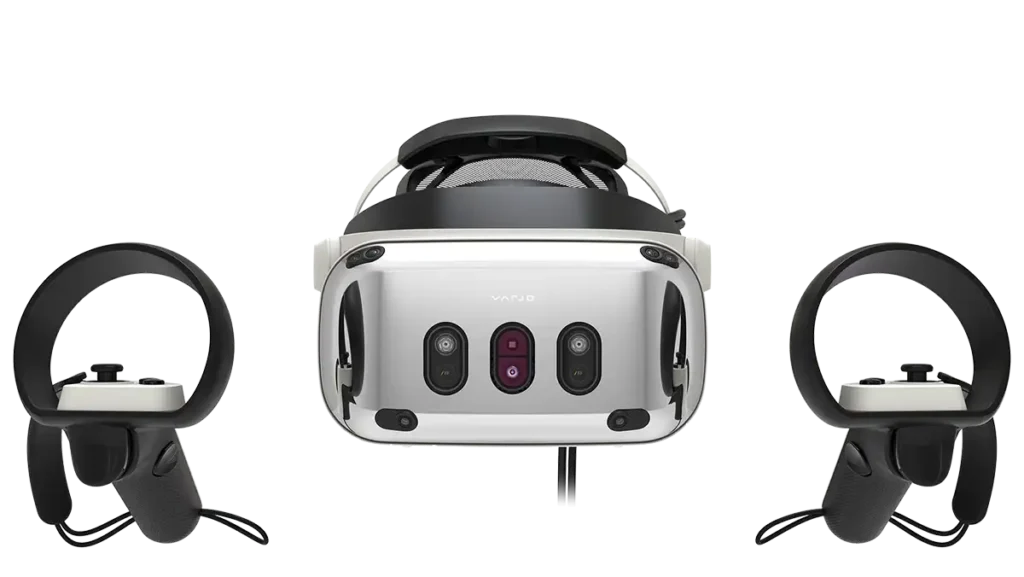
Full Binocular Vision
As the headset industry continues to push the boundaries of headset resolution and camera quality, Finnish startup Varjo has unveiled a new industrial mixed-reality system that promises an even better immersive experience. The Varjo XR4 headset features a single 4K display per eye with dual 20MP gaze-tracking autofocus cameras designed to make VR and the natural world indistinguishable.
The headset’s 4K by 4K, 200 nits mini-LED displays provide industry-leading visual fidelity with colour accuracy and 96% of the DCI-P3 colour space. The headset’s custom full-dome aspheric lenses showcase 28 million pixels in a 120degx105deg field of view, with 51 PPD (pixels per degree), compared to the 33 PPD offered by the base XR-3. The dual 20MP cameras feature advanced sensor fusion with 300 kpix extended range LiDAR, eye tracking, and ambient light reconstruction for accurate human vision replication.
Varjo’s XR-4 Focal Edition includes additional features for demanding use cases, including flight simulators, where trainees need to keep their eyes on gauges as they manoeuvre the yoke or peer outside a cockpit. These include the ability to automatically focus the cameras on the point of your gaze and an expanded vertical field of view of 105degs, up from 120degs for the standard XR-4.
The XR-4 also offers intelligent inside-out tracking with in-box Varjo controllers from technology partner Razer and integration with Nvidia’s Omniverse platform, enabling users to integrate the headset into existing 3D workflows for training, simulation, design, and engineering. The Varjo XR4 is lightweight, comfortable to wear for long periods, and features integrated DTS 3D spatial audio with noise-cancelling microphones to facilitate collaborative projects. It’s available through Resellers like Schenker Technologies for enterprise customers, with an Enterprise-Pro package that supports offline use without requiring user account registration, making it compliant for secure environments.
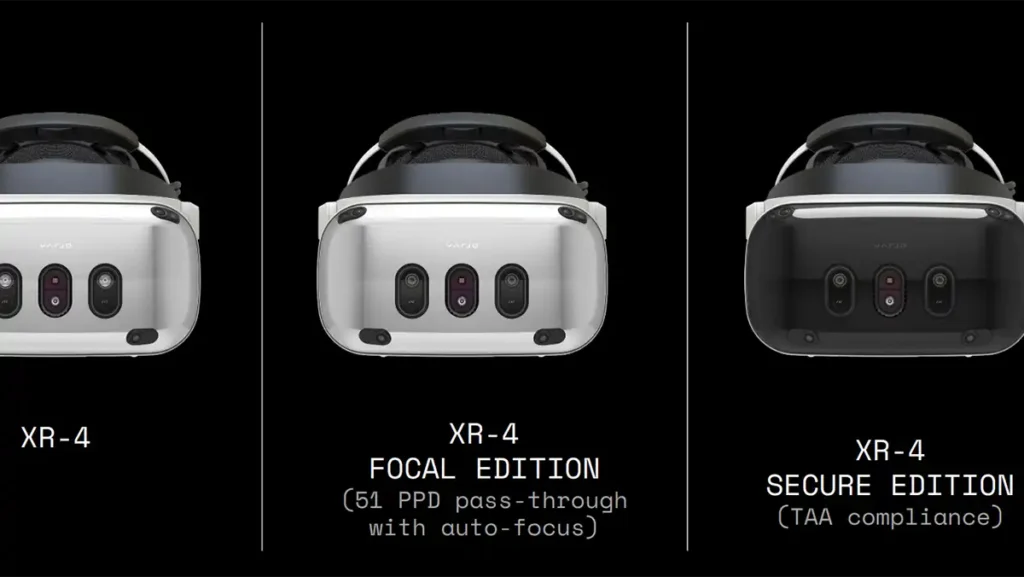

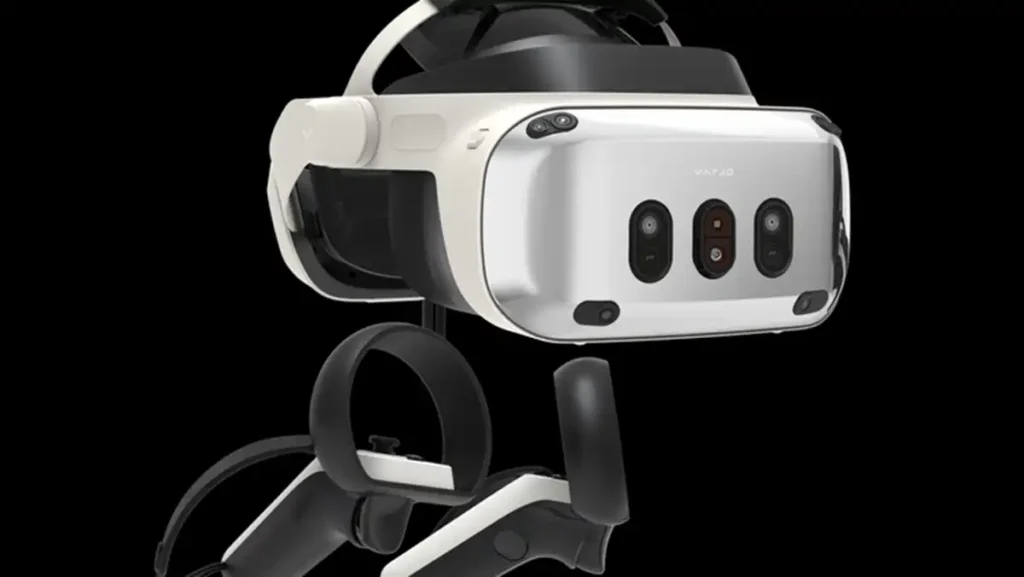
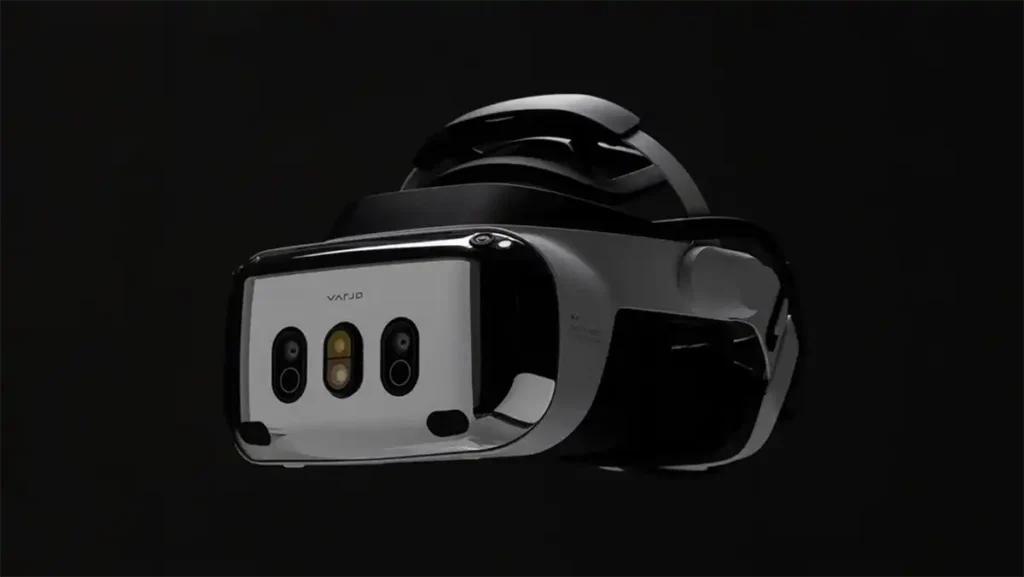
Custom Full-Domain Aspheric Lenses
Unlike multi-lens designs, aspheric lenses correct spherical aberration, delivering superior image quality and a compact design. They also enable the use of more efficient semiconductor components.
Moreover, aspheric optics can be used for other applications, such as optical instrumentation. They are highly suited for sight windows, which allow operators to see liquid levels or flow within tanks, pipelines and pressure vessels.
A headset’s ultra-high resolution is worthless if the real world remains blurry and unclear. Varjo’s passthrough technology solves this problem by introducing cameras that function like human eyes, frame in actual environments, and seamlessly overlay virtual elements without the usual disconnect between real and imagined.
While a standard VR display can reach only 33 pixels per degree (PPD) in the centre, Varjo’s aspheric lenses flawlessly showcase 28 million pixels across dual micro-OLED displays. The result is astounding visual fidelity with true-to-life colours and striking contrast via local dimming. Combined with blazing 200-nit brightness, the result is retina-rivalling fidelity that brings a new meaning to the word immersive.
Varjo’s headsets work with desktop workstations powered by Nvidia GPUs, offering completely unrestricted and upgradable performance. Integrated with Nvidia Omniverse, they provide access to various PC applications and 3D engines, enabling industrial users to incorporate mixed reality into their workflows. In addition, XR-4 features built-in inside-out tracking and includes tracked controllers in the box, eliminating the need for third-party base stations that other headsets require. The XR-4 Secure Edition adheres to government and enterprise-level security requirements and can operate offline for complete privacy. Designed for collaboration, it features integrated high-quality speakers and microphones. The system is assembled in Finland and comes with noise-cancelling, directional headphones to reduce distractions during meetings.
Full Array Local Dimming
A headset’s high-resolution display is useless if it can’t render what’s happening in the real world. This is the challenge that passes through mixed reality faces, and Varjo’s solution is to use multiple cameras on the headset to capture a sharp, low-latency image of what’s in front of you. This technology has been developing for years and is finally ready to be produced in Varjo’s new headset.
The XR-4 series’s dual 3840×3744 panels provide a total resolution of 51 pixels per degree, a refresh rate of 90Hz, and mini-LED backlighting for 10000:1 contrast local dimming with 200 nits brightness. The lenses offer a taller vertical field of view at 105deg, and a more accurate color gamut of 96% sRGB and 94% DCI-P3. The 20MP cameras feature gaze-directed autofocus, and the Focal Edition offers even better camera resolution for pilot training and other cockpit-based use cases.
Sensor fusion and ambient light sensors are also improved, with the ability to generate photorealistic 3D object lighting with real-time data. The XR-4 headsets can blend virtual content and natural surroundings more seamlessly than ever, with real-time depth maps of your environment allowing developers to create a unified experience.
As with Varjo’s previous headsets, the XR-4 series comes with built-in tracked controllers created with Razer and inside-out positional tracking that eliminates the need for base stations and requires no external sensor arrays to work. The XR-4 series is compatible with industry-leading VR applications and workflows and integrates with NVIDIA’s Omniverse for end-to-end collaboration.
You may like
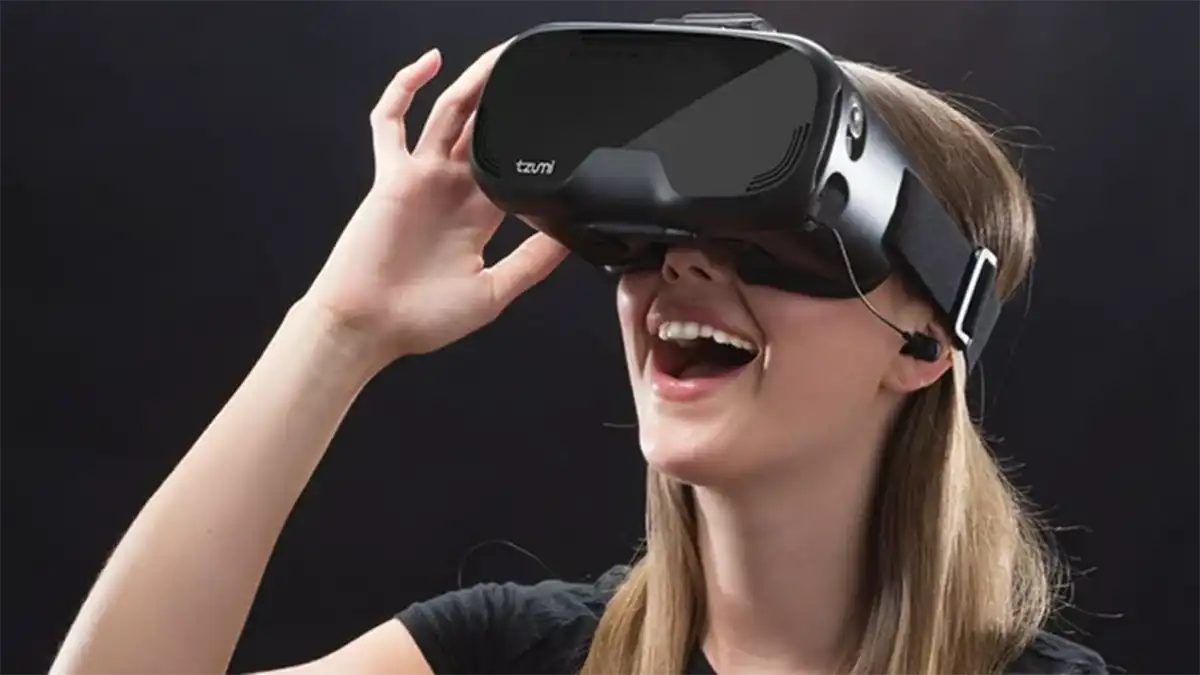
Dream Vision Virtual Reality
Dream Vision Virtual Reality is a cutting-edge VR headset that opens a gateway to captivating and lifelike virtual environments. Its comfortable design and versatile compatibility make it a vibrant addition to virtual reality.
Launch the VR application and follow any on-screen prompts or instructions to complete the calibration process. Ensure the lenses align correctly with your eyes and the straps are securely fastened.
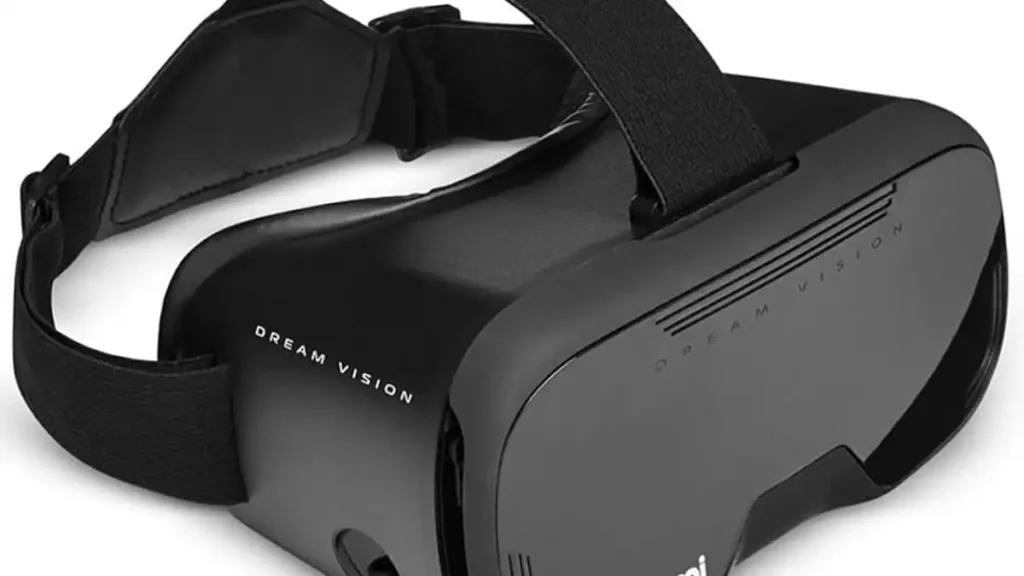
High resolution
The Dream Vision virtual reality system is a cutting-edge technology offering stunning, high-resolution graphics to bring immersive digital experiences to life. It is designed to be compatible with various devices, from gaming consoles to media players. This versatility empowers users to engage in immersive virtual activities, from immersive games to captivating VR movies and documentaries.
The headset’s display settings provide a spectrum of customizable options to optimize visual clarity and comfort. Using these settings, you can customize your virtual reality experience to suit your personal preferences and immerse yourself in captivating virtual landscapes with incredible realism. The headset also includes adjustable head straps and soft padding, ensuring a comfortable fit and allowing you to wear it for extended periods without discomfort.
Getting started with the Dream Vision VR headset is easy:
Find a suitable location to set up the headset and ensure it is properly connected to your smartphone.
Ensure the headset is securely attached to your phone, and the lenses are correctly aligned with your eyes.
Plug in your phone and power it up.
If you have a portable power bank, ensure it is fully charged to ensure consistent functionality during your VR experience.
The Dream Vision virtual reality system is a cost-effective option for enjoying immersive virtual experiences. It is also highly versatile and convenient, enabling you to enjoy VR games, watch immersive movies, and explore virtual tours. It is compatible with most mobile devices and easily connects to a PC or Mac. The headset is also lightweight and portable, making it an ideal choice for travelling and on-the-go entertainment.
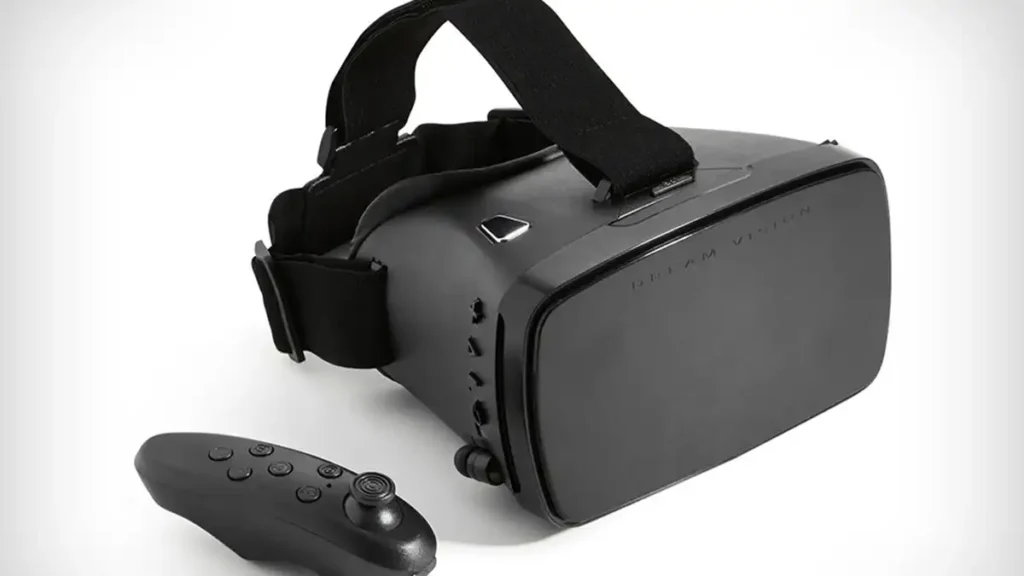
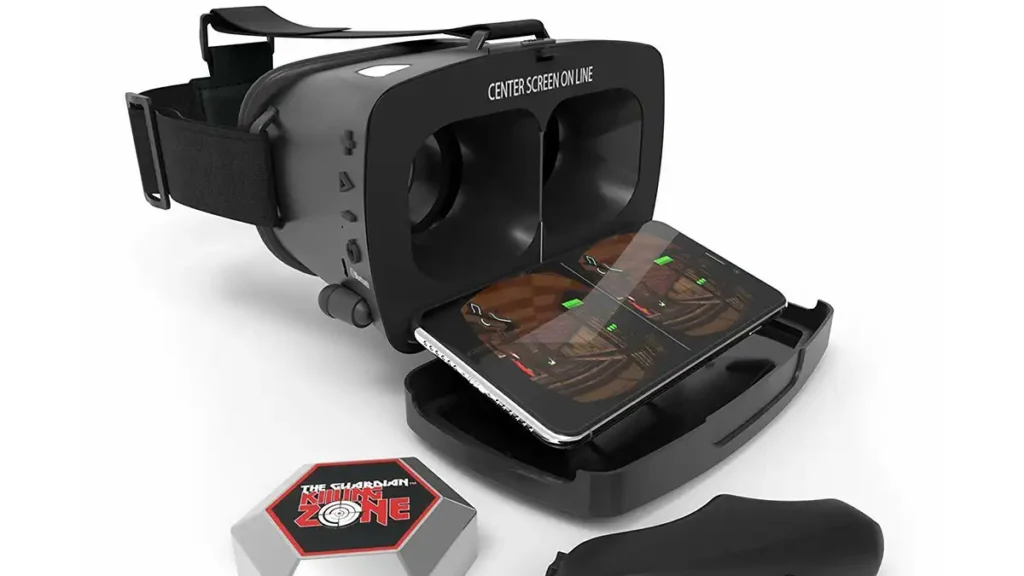
Wide field of view
The dream vision virtual reality system features an expansive field of view that allows users to explore lifelike virtual worlds. This immersive experience is ideal for gaming, multimedia consumption, and educational exploration. The headset also incorporates audio ports that allow users to connect their headphones for a more personalized and captivating VR experience.
The wider the field of view, the more realistic and immersive a VR experience will be. However, balancing its immersion with user comfort is important, as a wide FOV can cause neck strain. In addition, a wider FOV can make the world seem smaller and more unreal, which may cause motion sickness in some users. To minimize this effect, designers should ensure that critical interactive and narrative elements are visible within the FOV while reducing inappropriate content displayed in the peripheral area.
For this reason, most tethered VR headsets have a FOV of around 110 degrees or higher. For mobile VR, the FOV varies from headset to headset. The Varjo Aero headset, for example, has a FOV of up to 115 degrees. Moreover, the headset is compatible with various devices, including PCs and laptops.
To use a virtual reality headset, you’ll first need to launch the VR application or game you want to play. Next, place the headset on your head and align the lenses with your eyes. Finally, secure the straps around your head to prevent them from slipping or falling off. If you’re wearing glasses, align the lenses with your prescription. In addition, you’ll need to ensure that the straps are comfortably fastened so they don’t put pressure on your face or neck.
Intuitive controls
Dream vision virtual reality offers several intuitive controls that make it easy to navigate the interface. Users can use simple buttons and touchpad gestures to interact with virtual objects, navigate menus, and control VR experiences. In addition, the headset’s built-in high-fidelity audio technology creates an immersive experience that takes viewers into a new world. From a subtle whisper to the roar of an explosion, every sound is heard with clarity and depth.
Dream Vision Virtual Reality Headsets are designed to block out the external world, immersing users in a virtual environment where they can play games, watch movies, or engage in other activities. The device also includes sensors that track the user’s movements to create a realistic and engaging experience. The system has many applications, from social and multiplayer games to training and simulations.
To ensure a smooth and enjoyable virtual reality experience, following the manufacturer’s guidelines and usage instructions is important. These tips can help users avoid common problems, such as blurry visuals and discomfort. If the troubleshooting tips do not resolve the issue, users should consult the manufacturer’s website for more guidance.
Before starting a VR experience, securing the headset and checking that all components are functioning properly is important. It is also important to ensure that you stand in a clear space for accurate tracking and performance. Once the headset is securely positioned, follow any on-screen instructions to complete the calibration process. These instructions may include looking straight ahead and following a specific sequence of actions. It is also a good idea to keep the headset charged at all times, ensuring it continues functioning correctly.
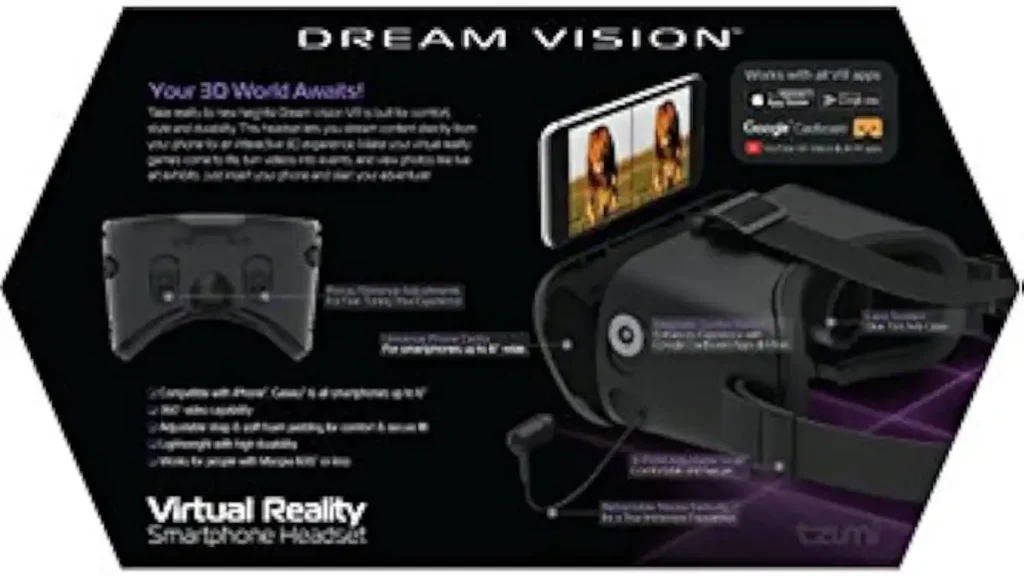
Comfortable design
The Dream Vision virtual reality system is designed for comfort, featuring adjustable straps and soft padding, providing a snug fit on different head sizes. It also comes with 3D earbuds that help reduce the noise in your headset. This lets you focus on the virtual world and prevents eye strain and neck pain. Moreover, it is light and easy to carry, perfect for long VR sessions. If you are experiencing discomfort or headaches, it is important to take breaks often and adjust the settings for your particular experience.
TZUMI Dream Vision virtual reality headset is an excellent option for those new to VR and who want to try it out. It is lightweight, comfortable and compatible with most smartphones. The headset is made with high-quality materials that make it durable. It is also compatible with popular VR apps and games. Moreover, it includes the full version of Killing Zone, one of the top VR games.
Aside from the comfort features of the headset, it is also a good choice for gamers and movie-watchers alike. It is compatible with various devices and can play immersive games, watch movies, or travel to other realms. The VR headset is also easy to set up and can be used at home or on the go.
To get the most out of your dream vision virtual reality experience, charge it and follow the manufacturer’s instructions. It is also a good idea to experiment with the head straps and padding and find the best configuration for your head size and shape. If you have trouble syncing or connecting the headset to your device, try restarting it or reinstalling the app.
Compatible with various devices
The Dream Vision VR headset is compatible with various smartphones, making it an accessible and versatile platform for immersive virtual adventures. By securely placing their smartphone into the designated compartment within the headset, users establish a direct visual and processing link that unlocks a treasure trove of captivating virtual experiences.
The headset features a streamlined design and ergonomic comfort to maximize user experience. Its adjustable head strap and cushioned padding accommodate different head sizes and shapes while ensuring a snug fit that minimizes discomfort during extended VR sessions. Moreover, its interpupillary distance (IPD) adjustment feature allows users to align the headset lenses with their eyes for optimal visual clarity and performance.
To ensure a seamless and enjoyable virtual reality experience, following the setup instructions provided by the VR application is important. These guidelines will help you correctly set up your Dream Vision VR headset and complete the initial calibration process. In addition, it is also advisable to stand in a clear space without any obstructions to ensure that your headset can track your movements accurately.
If you encounter any syncing or connectivity issues, it is important to follow the troubleshooting tips provided by the manufacturer. These tips will help you address common technical hiccups and resolve them quickly. In addition, if you are experiencing any audio or visual distortions, it is crucial to check the positioning of your phone and the headset lenses. In most cases, these issues can be resolved by recalibrating the headset. If you cannot resolve the problem, contact the manufacturer’s support team for additional assistance. This will help you return to enjoying your VR experience in no time!
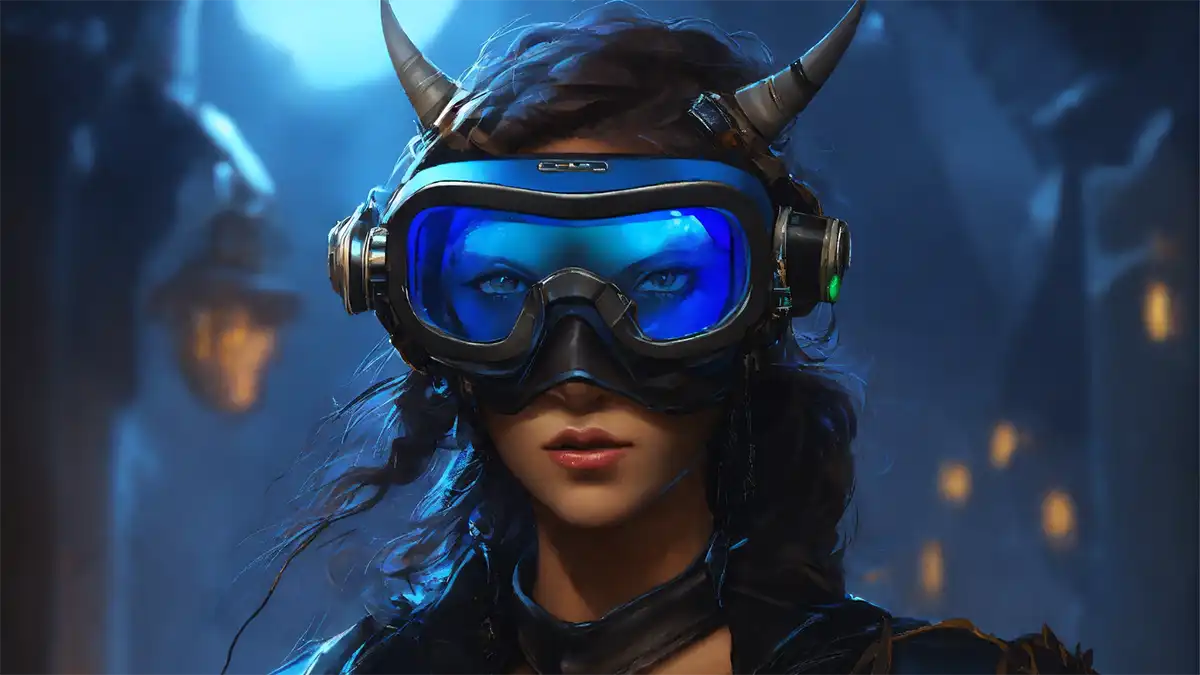
4chan Virtual Reality
The anarchic messageboard 4chan Virtual Reality has been the breeding ground for internet memes like lolcats and Rickrolling. But it’s also notorious for its lawlessness and obscene content. One prank even led to Coventry cat tormentor Mary Bale being outed by the site’s users.
The dominant imaginaries around VR involve enhancing existing forms of communication. This contrasts with the utopian visions of a new virtual world.


It’s a rumor
The internet spawned a lot of rumors about VR, but it’s hard to know whether they are true. While many of them are harmless, there are also some that are incredibly disturbing. This is why it’s important to check the sources of your rumors. The most reliable source of information is a trusted news site. But, even if you trust the information on a news site, it’s still a good idea to verify it with other sources.
One of the most popular rumors about VR is that it will be used for pornography. This rumor has spread widely thanks to the popularity of VR headsets and new filming techniques. It’s not surprising that porn has found a new home in VR, as it offers the opportunity to create realistic-looking scenes. In fact, some sites have already released dick ton of VR porn.
Another popular rumor is that VR will be able to do everything that games can do now, but without the motion sickness and other downsides. Some gamers think that this is the future of gaming, but others argue that VR is not a viable platform for gaming at all. The main reason for this is that VR is not as powerful as traditional displays. It’s also expensive and requires a high-end PC to run it.
The founder of Oculus, Palmer Luckey, has been criticized for liking a bunch of Trump-supporting tweets. He also likes alt-right memes and WikiLeaks conspiracy theories. It’s clear that he doesn’t support the views of most of the mainstream technology community.





It’s a leak
Despite its reputation for lawlessness, 4chan Virtual Reality has produced some of the internet’s biggest memes. From lolcats to Rickrolling, the anarchic US message board has become a cultural phenomenon with 22 million page impressions per day. While most of the site’s users are decent people, its anonymity has allowed it to exploit a darker side. This includes promoting conspiracy theories, spreading false news, and encouraging hate speech. It has even been responsible for outright sexism and homophobia. It has also been accused of pranking people for sex-related reasons.
The anarchic nature of the site has been a boon for viral content creators, but it can also be harmful to real-world people. For example, when CCTV footage emerged of Coventry cat tormentor Mary Bale stroking her feline before dumping it in a wheelie bin, the website exploded with outrage. The ensuing backlash resulted in her being sacked from her job.
In other cases, 4chan users have hacked into advanced artificial intelligence models to spread xenophobic propaganda and promote anti-Semitism. This has alarmed Meta, the company behind the LLaMA model. Users have been able to use the technology to create their own chatbots that are capable of generating a range of inappropriate and obscene content. The LLaMA hack has also prompted the creation of several variants of customised smutbots that can describe graphic scenes of gore and violence. This includes scenes of babies in blenders and neo-Nazi sexual assault.
Despite these risks, many users believe that they should be allowed to make a living from their work. However, the company is not willing to make exceptions for this group of people. This has led to a legal battle that will likely end up in court. If the court rules in favour of the company, it may be difficult for the plaintiffs to recover their losses.

It’s a game
The imageboard website 4chan Virtual Reality is an online community that’s mainly used by teenagers. Its boards discuss video games and anime, but it’s also known as a source of many memes and political movements. It’s been at the centre of several controversies, including Gamergate and various cyber attacks. Parents may be concerned about the site’s potential impact on their teens’ online safety, but they should know that it’s possible to set parental controls on broadband and mobile networks.
Although the site has rules in place, some boards contain inappropriate content that could be harmful to your teen’s online safety. For example, the /b/ board allows hate speech and specific pornography. Moreover, it is not moderated by staff and is therefore dangerous to teens. The site is also a source of hacktivism and has been the target of multiple violent attacks. The other iterations of 4chan, such as 8kun and 16chan, are less moderated and should also be avoided by teens.
Gamers will need a high-end PC to get the best experience from VR, which can cost over $1000. Until then, it will be a gimmick for most people. /v/ posters are jaded NEETs that don’t understand what they need to have fun and blame gaming corporations for everything.
A poster on the popular 4chan Virtual Reality message board UploadVR claimed that Bethesda is working on a virtual reality version of Elder Scrolls V: Skyrim. Whether this will be a separate product or a port of the special edition that launched last year on PS4, Xbox One, and PC is unclear. However, the poster did mention a new project called Starfield.



It’s a platform
As a platform, 4chan has been responsible for many of the internet’s biggest memes. However, the site’s anonymity has also led to a number of privacy concerns. Its users have been accused of cyberbullying, doxxing, and promoting fringe ideologies that can lead to harmful real-world consequences. These issues have fueled calls for the site to be shut down and banned.
While some of the site’s pranks have been relatively harmless, others have been quite disturbing. For example, when CCTV footage of a woman in Coventry stroking her cat before dumping it in a wheelie bin emerged, 4chan’s army of cyberpranksters quickly outed her and bombarded her with death threats. Another 4chan favourite is Pedobear, a cartoon character who appears cute and harmless but performs graphic sex acts. Other stunts have been loosely political in nature, such as calling on Google Hot Trends to make it harder for people to find the Church of Scientology’s website.
As for VR, it’s a gimmick for now. It’s expensive and there aren’t any good games out for it yet. Until we get better immersion technology and habtic feed back, it will be more of a novelty than anything else. If you’re a simfag then it might be worth the investment but otherwise, it’s just another fad that will fade away like the 3D TV.
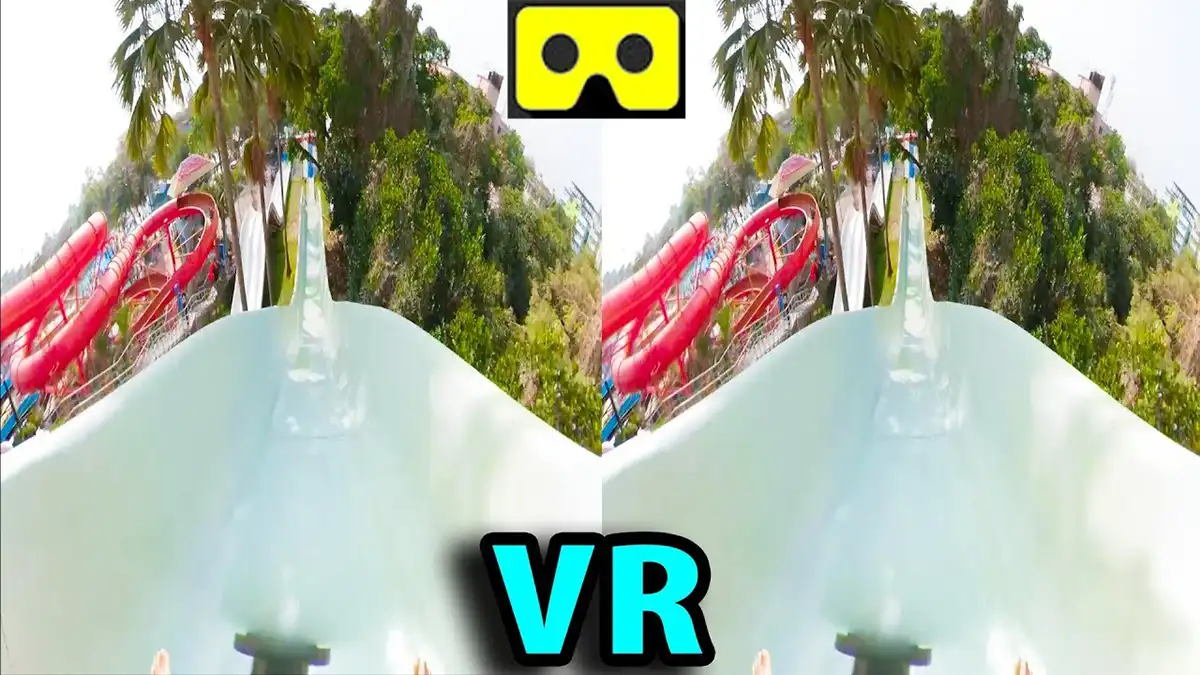
Virtual Reality Split Screen
Virtual reality split screen is a feature that allows you to see two different scenes simultaneously on your screen. It is beneficial and available in most VR games. It is also available in many augmented reality applications.
Using VR in marketing can increase brand awareness and provide customers valuable information. However, there are some risks involved in using this technology.

Split Screens
Virtual Reality Split screen are one of cinema’s oldest techniques, allowing storytellers to communicate nuanced narrative aspects in a powerful and visually striking manner. In addition to conveying parallel narratives and contrasting visuals, this technique can create dynamic action sequences that keep viewers engaged.
Despite its ancient origins, split screen has adapted to the technological advancements of filmmaking over time. With the advent of digital video technology, split-screen compositions have become more accessible to execute and are frequently employed in films and music videos. Split screen has also become an integral part of editing, enabling editors to create more complex and dynamic shots.
Split-screen often reveals multiple perspectives, illustrating how others perceive a character’s actions and reactions. This technique has been employed in the acclaimed Fox TV series 24 and Snapchat’s original content ‘Two Sides’, which followed two young lovers navigating their relationship with contrasting perspectives. It has also been used in films by director Edgar Wright, who has utilized it to elevate his distinctive visual style and evoke emotion in the audience.
When used in VR, a Virtual Reality split screen can enhance the viewing experience by making it more immersive. This is particularly useful in virtual reality because it can be challenging to navigate and see the entire video using a headset. Moreover, splitting the screen can allow you to watch a video without taking off your headset.
There are many ways to use Virtual Reality split screen, including streaming a video on a separate computer screen or using an app that allows you to share your desktop with other users. These apps are usually free, though some may require a paid subscription. Many of these software programs also offer several preset split-screen options; some even have an entire module dedicated to this feature.
Split screens in VR can be beneficial, especially if you want to show your friends or family something you’re doing on your PC. However, you should be aware that the quality of VR videos is much lower than that of non-VR movies because VR requires a higher frame rate to prevent motion sickness.


Pinnacle
Pinnacle is a video editing software program that offers several different split-screen templates. These can be used to create one-of-a-kind video projects and are ideal for use in virtual reality. They are easy to use and include all the features needed to produce professional-quality videos.
In VR, the split screen effect looks like a single image that occupies 90 degrees of your field of view. To use a Pinnacle template, navigate to Library > Montages and Templates > Split Screen Templates. Then, drag the template thumbnail into the timeline to open it in the Sub Editor.

Oculus Rift
After years of hype and scepticism, the first consumer virtual reality headset has finally arrived. Oculus Rift is a fabric-covered headset with flip-down headphones, an external sensor and two controllers. It connects to your computer with HDMI, USB, and DisplayPort cables, requiring a reasonably powerful PC to run smoothly.
The Rift was created by a company called Oculus VR, which was bought by Facebook in 2014 for $2 billion. Founder Palmer Luckey’s original prototype was a cheap, crude device that registered your head movements but didn’t track your position or let you control anything. It still felt magical, though, which convinced Zuckerberg to buy the company.
Since then, the Oculus Rift has improved dramatically. The latest Rift S model has a more refined design with a higher-resolution screen and less-distorting lenses. It’s also lighter and has a more comfortable face rest that doesn’t leave a ring around your eyes after wearing it too long. It’s not as immersive as the HTC Vive, but it’s still a significant step forward for VR.
You can play many games on the Rift, including traditional video games like EVE Valkyrie and Lucky’s Tale. But I think the headset’s real potential lies in experiences beyond gaming. Imagine enjoying a court-side seat at a basketball game or consulting with your doctor from across the country or the world. That’s what makes the Rift worth buying for gamers and non-gamers alike.
While the Rift is a phenomenal piece of hardware, it’s not without problems. Many people experience motion sickness when using virtual reality, and some never get used to it. If you experience this, taking frequent breaks and drinking water is essential. Also, it’s best to wear the Rift over glasses instead of contacts.
Oculus has various non-game content, including short VR movies and travel videos. Henry, for example, is an adorable story about a hedgehog, and it’s better than most of Pixar’s recent animated shorts. There are documentaries about the rainforest, Nepal, and other locations.




HTC Vive
HTC Vive is a virtual reality system that allows you to enter an immersive world. The headset and controllers work together to create a platform for endless games and experiences. Whether you’re an avid gamer or looking for something new and exciting to try, VR offers an experience unlike anything else. There are many different ways to use HTC Vive, including educational simulations, virtual tours of famous landmarks, and artistic creations.
The Vive is a PC-based virtual reality system that requires a high-end computer. It is not a plug-and-play device but relatively easy to set up. The setup process includes several steps, including installing the VR software and adequately connecting the hardware. It’s essential to follow the instructions carefully to avoid potential errors.
Once you’ve installed the VR software and connected all the cables, it’s time to test your headset and controllers. Launch a VR experience or video to ensure the headset functions correctly. You can also check the audio output and controller functionality by interacting with objects in the virtual environment.
Next, adjust the headset fit to ensure it’s comfortable on your head and positioned correctly in front of your eyes. Taking a break during long VR sessions is an excellent idea to prevent eye strain and other physical discomfort.
Finally, test the headset tracking by walking around the play area and observing the movement of your virtual avatar in the VR environment. This will help you identify any issues with the headset’s trackers and resolve them before attempting to use it again.
HTC Vive is one of the most popular VR systems available but has shortcomings. For starters, the system isn’t cheap, and it can require a significant amount of space to operate. It’s also not as intuitive to use as the Oculus Rift, and it can have problems with its display.
Despite these drawbacks, the HTC Vive is still an excellent choice for users who want to explore the possibilities of virtual reality. It’s available for purchase from third-party sellers and some tech retailers, and it’s a solid option for anyone looking to get into VR.

Oculus Quest 2 Game Review – Onward VR

Dream Vision Virtual Reality

Virtual Reality Rumors

Experience the Thrill of Virtual Reality Movies in Your Home 2024

Giantess VR – Explore a House

Explore the Virtual Reality Social Scene with These Top Platforms
Trending
-

 VR Movies6 months ago
VR Movies6 months agoExperience the Thrill of Virtual Reality Movies in Your Home 2024
-

 VR Games5 months ago
VR Games5 months agoGiantess VR – Explore a House
-
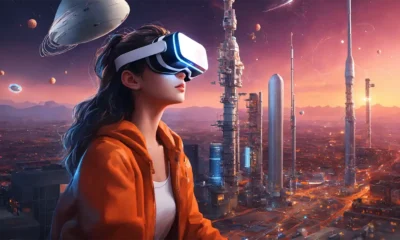
 Virtual Reality6 months ago
Virtual Reality6 months agoExplore the Virtual Reality Social Scene with These Top Platforms
-

 VR Games6 months ago
VR Games6 months agoInto the Radius on Meta Quest 2
-
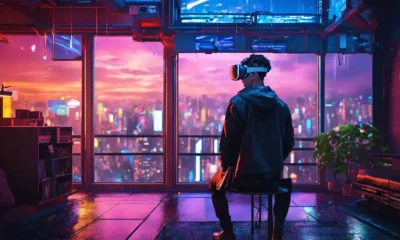
 Virtual Reality6 months ago
Virtual Reality6 months agoExplore Real Estate in Virtual Reality: A Guide to VR Real Estate
-
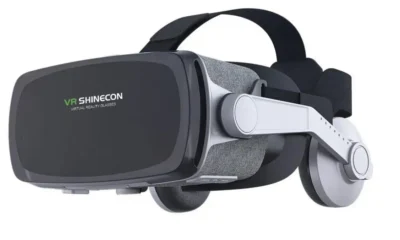
 Virtual Reality5 months ago
Virtual Reality5 months agoVr app for vr shinecon review 2024
-
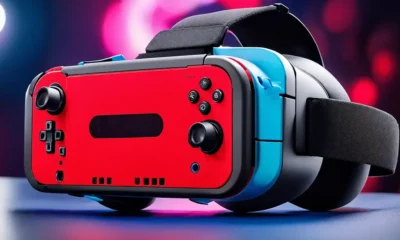
 Nintendo Switch6 months ago
Nintendo Switch6 months agoUnlock the Power of Virtual Reality with Nintendo Switch!
-

 VR Games6 months ago
VR Games6 months agoPokequest VR

